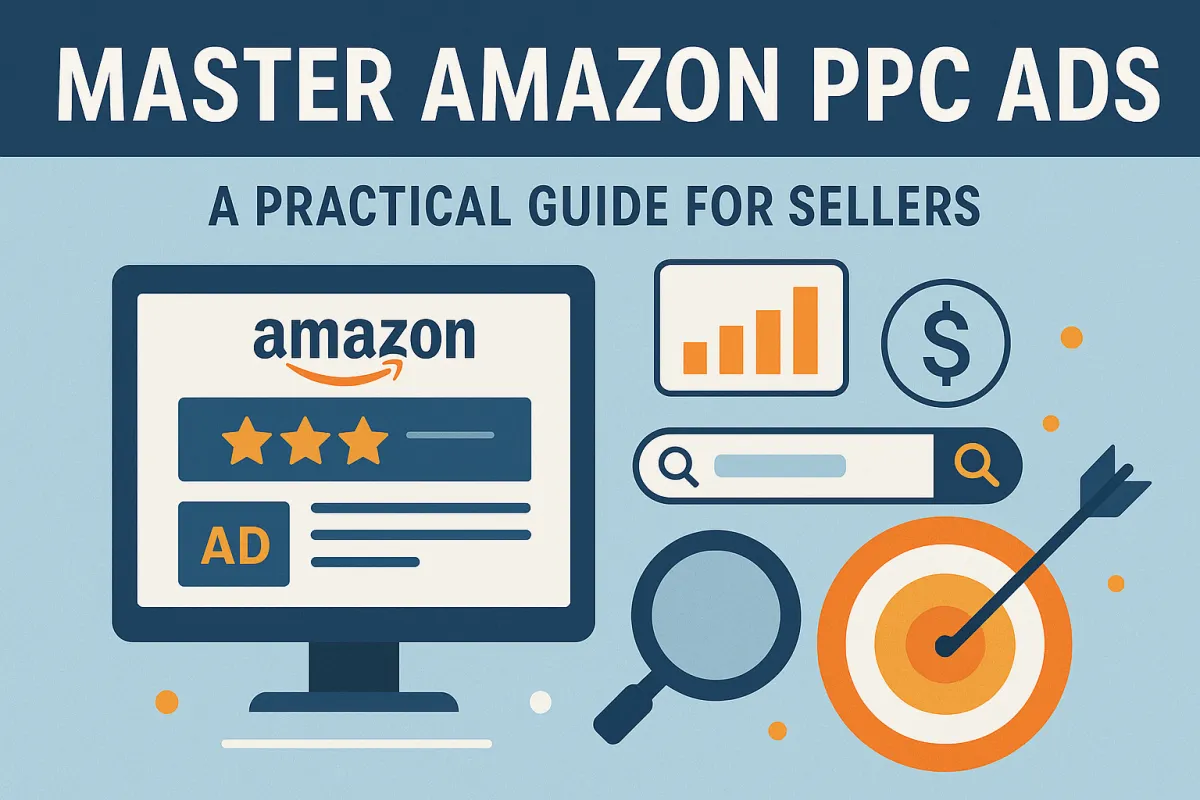
Master Amazon PPC Ads - Boost Sales with Proven Advertising Strategies
Mastering Amazon PPC Ads: A Practical Guide for Sellers
Amazon's marketplace is not just a retail empire—it's a fiercely competitive space where standing out is vital. Enter Amazon PPC (Pay-Per-Click) advertising, a game-changing tool for sellers looking to boost visibility and sales. Whether you're just starting as an Amazon seller or looking to refine your advertising strategy, this guide will walk you through the essentials of Amazon PPC, why it's crucial, and how it works. We'll also share actionable tips to help you create winning PPC campaigns.
What Are Amazon PPC Ads?
Amazon PPC is an advertising model where sellers pay a fee each time someone clicks on their ad. These ads appear prominently across Amazon's search results and product pages, helping sellers showcase their products to the right audience. Essentially, PPC ads function as a way to buy visibility and drive traffic to your listings, making them a critical tool for increasing sales and staying ahead of competitors.
Types of Amazon PPC Ads
Amazon offers three main types of PPC ads:
Sponsored Products: These ads promote individual listings and appear in search results and on product detail pages. They are ideal for driving traffic to specific products.
Sponsored Brands: Focused on brand visibility, these ads showcase a custom headline, logo, and a selection of products.
Sponsored Display: These ads use Amazon's targeting to reach shoppers both on and off Amazon, enhancing brand reach.
Each ad type serves specific goals, allowing sellers to tailor their strategies based on their needs.
Why Amazon PPC Is Crucial for Sellers
Amazon PPC is not just a tool—it's a necessity. Here’s why it’s so important:
Improved Visibility: With millions of products on Amazon, PPC helps ensure your products are seen by potential buyers.
Higher Sales: Increased visibility often translates into more clicks and purchases.
Better Organic Rankings: PPC sales can directly boost your product's organic search ranking, as Amazon's algorithm heavily weighs sales velocity.
Targeted Marketing: PPC ads reach shoppers actively searching for products like yours, increasing the likelihood of conversions.
How Do Amazon PPC Ads Work?
Amazon PPC operates on an auction-based system. Here's a simple breakdown:
Bidding: You set a maximum bid amount for a keyword. Competing advertisers are doing the same.
Keyword Relevance: Amazon’s algorithm considers both the bid and the ad’s relevance to the shopper's search.
Auction Success: If your bid wins, your ad appears in a prominent position. You’re only charged when someone clicks on it.
The key lies in balancing competitive bids with strategic, relevant targeting to achieve the best possible return on ad spend (RoAS).
Actionable Tips for Creating Effective Amazon PPC Campaigns
1. Conduct Thorough Keyword Research
Keywords are the backbone of any successful PPC campaign. Use Amazon's tools like the keyword planner or third-party software to identify terms your target audience is searching for. Focus on:
High-volume keywords for increased visibility.
Long-tail keywords for more specific targeting.
Negative keywords to filter irrelevant searches and avoid wasting your budget.
2. Organize Campaigns Strategically
Group similar products into the same campaigns to streamline your efforts. For example:
Campaign Structure: Create separate campaigns for each product category or type.
Ad Groups: Use ad groups to test different sets of keywords for each product.
This organization simplifies evaluation and optimization.
3. Set a Realistic Budget
Your budget controls the number of clicks your ad can accumulate. Here’s how to plan:
Start with a conservative daily budget, such as $10–$20, to test performance.
Gradually scale up based on results.
Use the Cost-Per-Click (CPC) data to calculate your break-even point and ensure you’re not overspending.
4. Optimize Your Listings
Even the best ads can’t succeed if your product listings aren’t optimized. Ensure your:
Product titles include high-value keywords.
Bullet points clearly state benefits and features.
Images are high quality and showcase the product from multiple angles.
An optimized listing converts clicks into sales.
5. Monitor and Adjust Campaigns Regularly
PPC campaigns require ongoing attention to perform well. Monitor:
Impressions and Click-Through Rate (CTR): Are shoppers clicking your ads?
Conversions: How many clicks turn into purchases?
ACoS (Advertising Cost of Sale): This measures the percentage of sales spent on advertising. Aim to keep this metric low.
Adjust bids, keywords, and budgets based on this data to improve performance over time.
6. Experiment with Targeting Options
Amazon allows sellers to use both automatic and manual targeting:
Automatic Targeting: Amazon matches your product to keywords and audiences. This is great for beginners or gathering initial data.
Manual Targeting: You select specific keywords and set bids. This provides more control once you’ve analyzed your campaign performance.
A combination of both targeting methods often yields the best results.
Common Mistakes to Avoid with Amazon PPC
Ignoring Data: Regular analysis is crucial. Ignoring performance metrics can lead to wasted ad spend.
Overbidding: While competitive bids are vital, overbidding can quickly drain your budget without guaranteeing returns.
Neglecting Negative Keywords: Without negative keywords, your ad might appear in irrelevant searches, leading to non-converting clicks.
Wrapping Up
Amazon PPC advertising is a robust tool that can help you stand out, drive sales, and grow your business. However, success requires a clear strategy, consistent monitoring, and ongoing optimization. By conducting thorough keyword research, setting realistic budgets, and staying on top of performance metrics, you’ll be well on your way to creating efficient and profitable campaigns.
Take Action Today: Start experimenting with Amazon PPC ads to see how they can enhance your sales. Your competitors are leveraging it—don’t get left behind!
Contact us today if you need expert Amazon PPC ad services to boost your sales.
